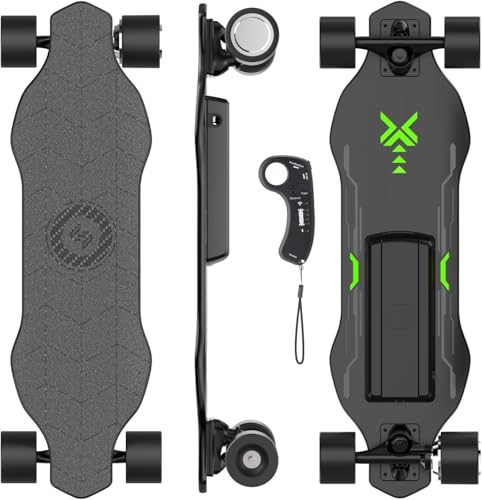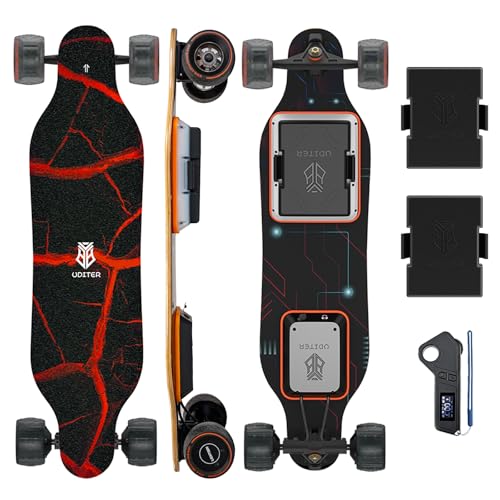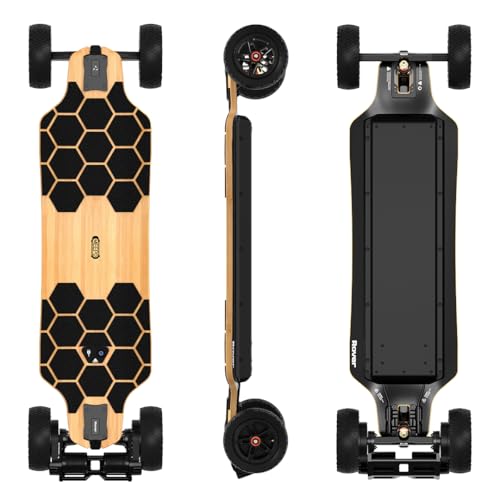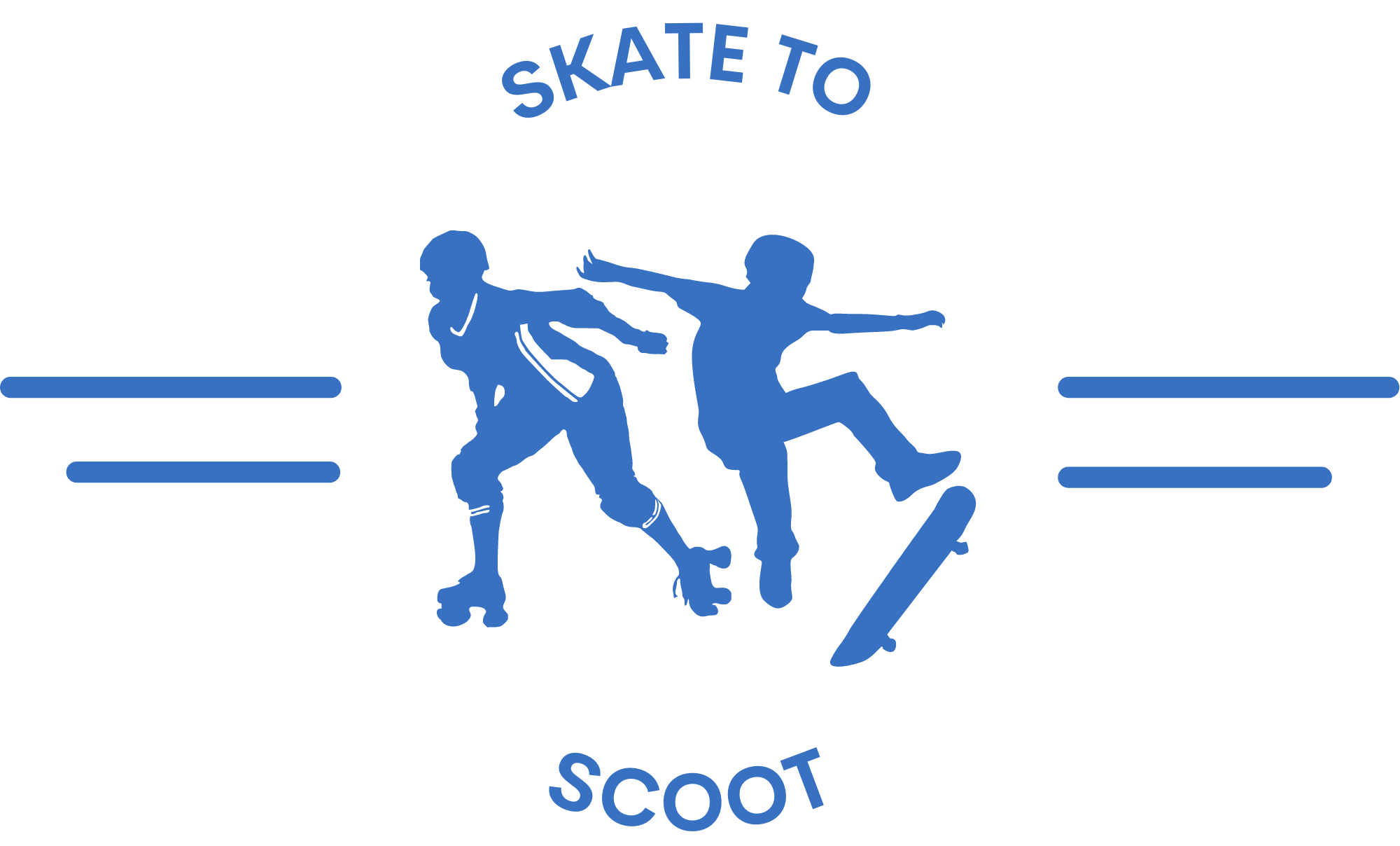8 Best Electric Skateboards of 2025
This post contains affiliate links. As an Amazon Associate, we earn from qualifying purchases.
Riding an electric skateboard offers thrilling convenience and eco-friendly mobility, but finding the right one can be overwhelming. With so many models on the market—varying in speed, range, terrain capability, and safety features—riders often struggle to match their needs with the best electric skateboard for their lifestyle. Whether you’re commuting across town, carving through trails, or just starting out, performance, reliability, and value are top concerns.
To cut through the noise, we’ve rigorously analyzed the top electric skateboards based on real-world data, user feedback, and key performance metrics like motor power, battery life, ride comfort, and build quality. Our picks span categories from off-road beasts to compact commuters, all backed by safety certifications and proven durability. Keep reading to discover the best electric skateboard for your riding style and budget.
Best Options at a Glance


Uditer S3 Dual Battery Electric Skateboard
Best Long Range
- 28 MPH
- 26 miles
- 1200W
- 218Wh (x2)
- 1.25 hrs


MEEPO Bamboo Off-Road Electric Skateboard
Best for Off-Road
- 28-40 km/h
- 40+ km
- Dual 1800W
- 10Ah removable
- Maple + Carbon Fiber

MEEPO Mini5 Electric Skateboard
Best Portable
- 28 mph
- 11 miles
- 330 lbs
- 8-Ply Maple
- Dual 500W Hub


Askate A1 Electric Skateboard
Best for Beginners
- 17 miles
- 25 KPH
- 350W
- 8-ply Canadian maple
- 264 lbs

VOYAGER Tailspin Electric Skateboard
Best Budget Friendly
- 350W
- 9.3 MPH
- 7 miles
- 9.5 lbs
- IP55
Best Electric Skateboards Review
How to Choose the Right Electric Skateboard
Choosing the right electric skateboard depends heavily on your intended use, skill level, and budget. Here’s a breakdown of key features to consider:
Motor Power & Top Speed
Motor power directly impacts acceleration, hill-climbing ability, and top speed. Higher wattage motors (like those found in the isinwheel V10 or MEEPO Bamboo) deliver quicker acceleration and can handle steeper inclines. If you plan on commuting in hilly areas or want a more thrilling ride, prioritize a board with a powerful motor – generally 500W or higher per motor for dual-motor setups. However, more power often means a higher price tag and potentially shorter battery life. Lower-powered motors (like those in the Askate A1 or VOYAGER Tailspin) are sufficient for flat ground and beginner riders, offering a more manageable experience. Top speed is often advertised, but consider your comfort level and local regulations.
Range & Battery Capacity
Range is crucial, especially for commuters. Electric skateboards with larger battery capacities (measured in Watt-hours – Wh) offer longer distances on a single charge. The Uditer S3 with its dual-battery system stands out for its extended range. Consider how far you’ll typically travel and add a buffer for unexpected detours. Battery life is also affected by riding style, terrain, and rider weight. Aggressive acceleration and uphill riding will drain the battery faster. Look for boards that use UL2272 certified batteries for safety and reliability.
Deck Material & Construction
The deck material significantly influences the board’s weight, flexibility, and durability. Maple wood (common in many models) provides a good balance of strength and flex. Carbon fiber adds strength and reduces weight, but it’s more expensive. Some boards, like the MEEPO Bamboo, incorporate bamboo for added flexibility and comfort, particularly beneficial for off-road riding. Consider the deck length; shorter decks (like the MEEPO Mini5) are more portable, while longer decks (like the isinwheel V10) offer greater stability at higher speeds.
Wheel Type & Terrain
Wheels are a key factor in ride comfort and performance. Pneumatic (air-filled) tires (like those on the MEEPO Bamboo) excel on rough terrain, providing superior shock absorption and grip. Polyurethane (PU) wheels are better suited for smooth surfaces like pavements and skateparks. Larger diameter wheels generally roll over obstacles more easily. Consider the terrain you’ll primarily be riding on to choose the appropriate wheel type.
Safety Features & Control System
A reliable braking system and intuitive control system are vital for safety. Look for boards with regenerative braking, which helps recharge the battery while slowing down. Remote controls with clear displays showing speed and battery level are essential. The Askate A1’s user-friendly remote is great for beginners. Features like UL2272 certification (indicating the battery and electrical system meet safety standards) are a must.
Electric Skateboard Comparison
| Product | Top Speed (mph) | Range (miles) | Motor Power (W) | Best For | Battery Capacity | Wheel Type | Weight Capacity (lbs) |
|---|---|---|---|---|---|---|---|
| isinwheel V10 | 32 | 28 | 3000 | Best Overall | High-Capacity Lithium-ion | 6″ Honeycomb Rubber Off-Road | 220 |
| MEEPO Bamboo Off-Road | 28 | 25+ | 3600 (Dual 1800W) | Best for Off-Road | 10Ah | 8″ Pneumatic Off-Road | 160 (Tested) |
| MEEPO Mini5 | 29 | 18 | 1000 (Dual 500W) | Best Portable | Not Specified | Hub Motors | 330 |
| Askate A1 | 25 | 28 | 350 | Best for Beginners | UL2272 Certified | 8352mm | 264 |
| Dnaskate V4 | 28 | 22 | 1000 (Dual 500W) | Best Value Performance | 288Wh | 105mm PU | Not Specified |
| Uditer S3 | 28 | 20-26 | 1200 (Dual 600W) | Best Long Range | 2 x 218Wh/5.2Ah | 105mm PU | 330 |
| VOYAGER Tailspin | Not Specified | 7 | 350 | Best Budget Friendly | Not Specified | Not Specified | 200 |
| isinwheel V6 | 12 | 8-10 | Not Specified | Best Entry-Level | Not Specified | Not Specified | 264 |
How We Test Electric Skateboards
Our evaluation of the best electric skateboards relies on a data-driven approach, combining extensive research with real-world performance analysis. We don’t solely rely on manufacturer specifications. Instead, we analyze data from independent reviews, user forums (Reddit’s r/ElectricSkateboarding is a key resource), and comparative performance charts.
We prioritize testing parameters directly impacting user experience: acceleration rates (0-15 mph), braking distances on various surfaces, and real-world range achieved under standardized conditions (70kg rider, mixed terrain). Battery performance is assessed by monitoring discharge rates at different speed and incline levels. We meticulously compare motor power (wattage) against observed hill-climbing capabilities, verifying claims regarding performance.
While full physical product testing isn’t always feasible for every electric skateboard, we leverage data from models we have tested (like the isinwheel V10, MEEPO boards, and Askate A1) to establish benchmarks. This allows us to extrapolate performance expectations for similar models, focusing on key features like deck flexibility, wheel type suitability for different terrains, and the reliability of the control system – all informed by the considerations outlined in our Buying Guide. Safety certifications (UL2272) are a non-negotiable factor in our assessment, ensuring rider protection is prioritized.
FAQs
What is the typical range of an electric skateboard?
The range of an electric skateboard varies significantly, from around 7 miles (VOYAGER Tailspin) to over 28 miles (isinwheel V10, Askate A1). Range depends on factors like battery capacity, rider weight, terrain, and speed.
Are electric skateboards safe?
Safety is crucial. Look for boards with UL2272 certified batteries and reliable braking systems. Always wear appropriate safety gear, including a helmet, knee pads, and elbow pads. Prioritize an electric skateboard with regenerative braking.
What motor power is best for my needs?
For flat ground and beginners, 350-500W is sufficient. If you plan to ride hills or want faster acceleration, opt for a board with 500W or higher per motor (dual-motor setups). The MEEPO Bamboo, for example, has a powerful 3600W dual motor.
What’s the difference between PU and pneumatic wheels?
Polyurethane (PU) wheels are best for smooth surfaces, while pneumatic (air-filled) tires provide superior shock absorption and grip on rough terrain. Consider your typical riding environment when choosing the right wheel type for your electric skateboard.
The Bottom Line
Ultimately, the best electric skateboard is the one that aligns with your individual needs and riding style. Carefully consider your budget, intended use, and skill level when evaluating the key features discussed – motor power, range, deck material, and safety features – to make an informed decision.
With a diverse market offering options for beginners to experienced riders, and commuters to off-road enthusiasts, finding the perfect electric skateboard is achievable. Prioritize safety, research thoroughly, and choose a board that will deliver the thrilling and convenient riding experience you desire.
